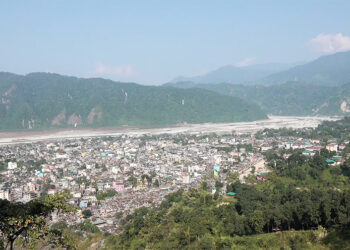 Lack of community ownership is hampering efforts to provide safe drinking water according to a stakeholders meeting.
Lack of community ownership is hampering efforts to provide safe drinking water according to a stakeholders meeting.
In 2009, hospitals in the country treated 65,000 people for diarrhea, indicating that people do not have access to safe drinking water.
Participants said access has improved significantly over the years but the safety is being compromised by poor maintenance of facilities.
A Water Safety Plan (WSP) was initiated to ensure the safety of drinking water.
According to Kelzang Nima, the WSP coordinator, the plan aims to “ensure that the water is free of contamination during storage, at the municipality reservoirs and domestic distribution tank.
The problem is with the individual water tanks.
“People do not clean their overhead distribution tanks, and there is a high possibility that distribution tank is a breeding ground for microbiological germs.”
The Water Safety Plan concept has been implemented in major towns and in a few rural areas.
According to the government’s mid-term review reports, 90 percent of Bhutanese have access to piped-water but one third of these facilities are dysfunctional. The problem has also been compounded by the shortage of budget for maintenance.







